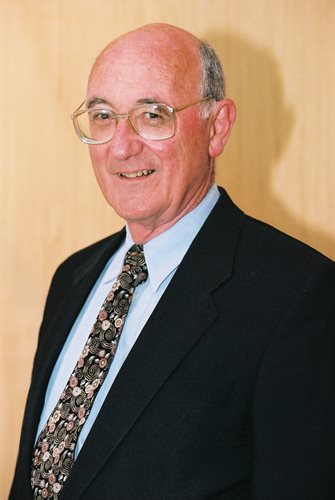August 21, 2018 Print
It is with great sadness that we mark the passing of Professor Peter Castaldi AO.
With Professor Miles Little, Peter was the co-founder of the very strong research and academic tradition of Westmead Hospital, with a clinician researcher leading every key department.
 Professor Peter Castaldi was a founding father of the Westmead Institute.
Professor Peter Castaldi was a founding father of the Westmead Institute.
Peter himself was an internationally eminent researcher in Haematology, with significant contributions to the area of Thrombosis and Haemostasis. In recognition of his contributions to the field, he received the Chevalier dans l’Ordre Nationale du Merite in 1989 and was awarded an Honorary Doctorate by the University of Paris. In 1992, Peter was made an Officer in the General Division of the Order of Australia for his services to medicine and he received the Medal of the Royal Australasian College of Physicians in 1994.
Peter played a key role in establishing the Westmead Institute. Together with Professor Jeremy Chapman, he set up the Foundation Chair in Research Medicine in collaboration with the University of Sydney.
He maintained a strong interest in the Institute, persuaded Professor Peter Doherty to be the first patron and Mr David Greatorex to be the first chairman of the Board of the Institute. Peter also joined the Advisory Board and as chairman of the Western Sydney Area Health Service Board he provided excellent political and strategic advice, especially in the early days, and continued to advocate for the Institute.
Peter helped raise millions of dollars for both the first and the current building of the Institute. He was a strong advocate for the Institute to become an independent entity, while maintaining close affiliations with Westmead Hospital and the University of Sydney, cemented through joint positions in each for the Director of the Institute. This principle has been a key to establishing the multi-disciplinary and translational research model of the institute and precinct, which we now take for granted and enjoy.
After his retirement, Peter remained a valuable source of wise council, at meetings often arranged in surroundings conducive to free flowing but strategic discussions with eminent persons of varying backgrounds. He inspired a family tradition of public service to Westmead. His wife Norma made a tireless contribution to the aesthetics of the Hospital and the Institute through the Westmead Arts Society and presented us with our first artworks. His son Julien has carried on this tradition by providing expert legal advice to the Institute in recent years.
We will always remember Peter as one of the scientific founders of this great precinct. We will miss his wise council, his quiet strength, his sense of equity and his life-long passion for medical research and its translation into improved health care for all.
He has inspired us all to continue his legacy.